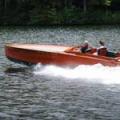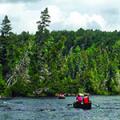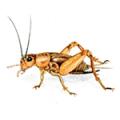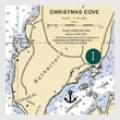Welcome Downeast
The Town, the Bays, the Mountains
In summertime with a witching wand,
In every wheelrut’s now a brook,
In every print of a hoof a pond.
Be glad of water, but don’t forget
The lurking frost in the earth beneath
That will steal forth after the sun is set
And show on the water its crystal teeth.
—Robert Frost
Dear Friends:
March is very much about light; we haven’t seen this much sunlight for six months and the vernal equinox is straight ahead. The sun hits the tops of the trees a little earlier in the morning. It fades a little later in the evening, and so do we. Things that were dormant in the ground and in our hearts begin to stir and swell. The ground begins to breathe again; the tidal flats break out from their icy armor and fill the air with their pungent perfume, bringing calls of joy from shore birds. We hang out laundry in the March breezes. On sunny days, multi-colored sparkles and flashes shoot from drops of water on icicles hanging from broken maple twigs.
Natural events, March
One cold day the crows were in the pasture out back scouting around with their bandy-legged gait and ebony feathers ruffled by the bitter wind. What could they possibly find to eat out there? They do eat worms like the robins but even though it is the Worm Moon they aren’t going to find many worms in that frozen ground. They do eat insects too, but the same holds for that. We concluded that they were likely scavenging in the fallen detritus of the whole Winter past, laid bare by the melting snow and ice cover as it recedes across the field like a melting glacier. Maybe they are finding seeds, dead insects or even a dead mouse or two. Crows are preeminently omnivorous. They are eating the past, much the same as we do when we enjoy potatoes, carrots and other root vegetables, winter squash and apples and other produce of the land, or that frozen backstrap of venison our late neighbor gave us quite a while ago—eating the past. Next thing we knew, the hardy crows were gathering dead grass in their beaks and flying off to a suitable nesting place, making the future from the past.
Another day we rise to the thrilling trill of a bright red male cardinal staking out his turf and alerting the ladies that he is ready. A couple of days before that we heard several mourning doves hooting to each other in the woods along the road. Next it was the spring song of the chickadee and the hammering and calling of the pileated woodpeckers, joined by the loud shouts of the blue jays rocketing from tree to tree. We all know that winter does not last forever, and that spring does not skip its turn, and yet the shouts and songs of the birds set to music what is in our hearts just as well as what is in theirs. The chorus of spring has begun.
Wild speculation
Just imagine the feelings of a sugar maple these days when spring “fizzes up in trees, trees heaving up streams of sugar…” as Annie Dillard says it. After sleeping all winter, surviving on the tiniest trickle of sweet sap soaking up from your roots, suddenly it’s a swift, sweet sugar rush coursing through your trunk and limbs and branches and out to the tips of your tiniest twigs. Your trunk swells, your bark stretches, you feel the sun and wind and rain again. Your buds start to itch as they push toward bursting. You come awake, you come alive again. Whoo-wee! If that sounds familiar, it’s because everything alive around here is starting to feel something like this. I don’t know what they call it, but we call it “Spring Fever.”
Field and forest report
We have yet to see the more showy first flowers of spring—snow drops, daffodils and the like. But there is one flower coming into bloom here all along the chilly coast this week. OK, all you amateur naturalists: What native flower is in bloom right now? Time’s up! It is the pussy willow (Salix discolor).
Pussy willows are the humble bearers of what may be the first wild blossoms of the season, and what strange flowers they are: just a bundle of silky gray fluff lined up along dark glossy twigs—no petals, no round golden center, no bright color—all emerging from hard, shiny buds, when it is still frosty at night. The reveal comes later when those cuddly kitties are covered with golden pollen. It is still too cold for bees and butterflies to pollinate, but the catkins bloom bravely anyway and cast their fate to the winds.
There are a number of kinds of wild willow (genus Salix) found in Maine, mostly growing close to slow-moving water. One year we kept the pussy willow stalks in water until they rooted. I stuck one in a wet spot out back and it sprouted and thrived there, giving us pussy willows every April for years. The First People used red willow bark as a natural aspirin; the bark was peeled off and dried and steeped to make tea. Very effective. The old timers also knew how to make a willow whistle with a short piece of a willow stalk and a pocket knife.
Natural events, April
April in Maine can be about as different from March as a woodchuck is from a groundhog—that is, no different. Both months mean gray skies, chilly nights, and a daily fire in the woodstove. But while March is about the return of the sun, April is about the return of fresh water as the snow and ice melt and streams and rivers are released from their icy fetters. April means the sound of rushing water, ice jams and flooding up north, and some sport fishermen waiting too long to bring in their ice fishing shacks, with predictable results. April also means the steady patter of showers and rolls of thunder pierced by the rain song of the robin as April’s avian avatar sings a hymn of joy and gratitude for the feast ahead as the rains drive worms up out of the ground.
Another attraction of April is that it offers a black fly moratorium whereby the nasty gnats are charitable enough to refrain from biting us until closer to Mother’s Day. This provides a fine time after snow and ice are gone to get outside and get busy. You may need your rubber boots, though.
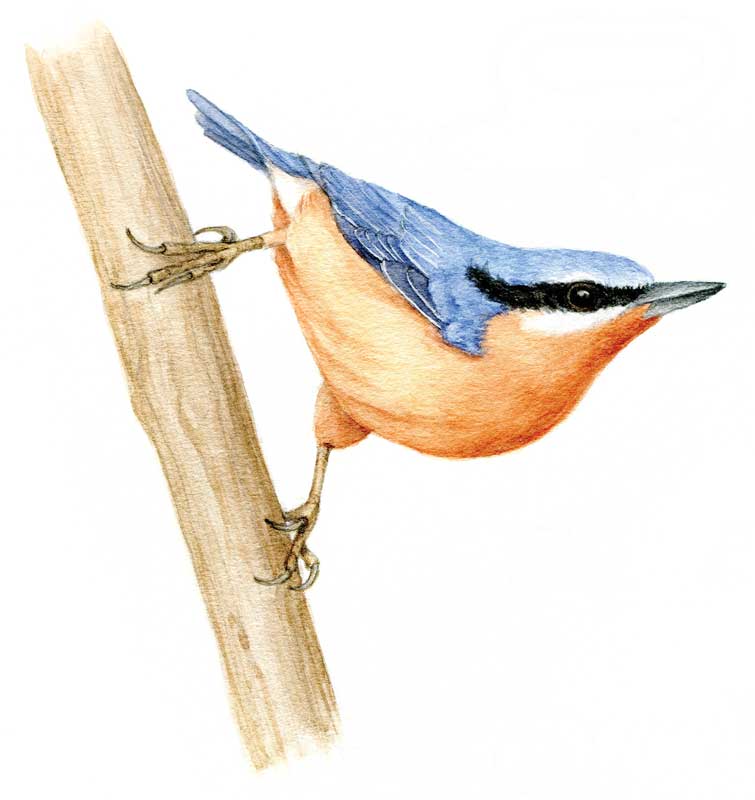 Illustration by Candice Hutchison
Muddy events
Illustration by Candice Hutchison
Muddy events
The opening quote of this Almanack is from Frost’s poem “Two Tramps in Mudtime,” one of the works that made Frost the premier poet of rural New England. In spring it was common for unemployed men to take to the roads looking for farm work which began to pick up at this time. These tramps went on foot, a much surer way to travel the muddy roads in April than in a buggy or a car. When the frost leaves the ground, it turns the soil into something resembling chocolate pudding—a sticky, gooey mess.
I recall getting a big old International tractor stuck in a well-known muddy spot at the end of a row in an orchard on the farm where I was employed. This mud hole was well-known, but not to me at the time, as I was new on the job. I walked shyly a quarter mile back to the barn and got a smaller 4-wheel drive John Deere tractor, then drove back to the orchard. I promptly got that one stuck too. After another humiliating walk I got the big old farm truck and a very long chain and another man to help and by dint of great effort we pulled everything back onto solid ground. Needless to say, that mud hole was then well-known to me and I never got stuck there again.
Whitewater report
April in Maine also means whitewater season and river races. From the canoes of the First Americans to the bateaux of the river drivers to the high-tech canoes and kayaks manned by modern thrill-seekers, whitewater has challenged human skill and endurance for ages. There is nothing quite like trying to think and move faster than the river, looking for the downstream V, and just missing those widow-maker rocks as the rushing water carries you along where it will and as it will. Do not wear your rubber boots for this adventure, though. You may have to swim. To paraphrase Samuel Johnson, nothing concentrates the mind so wonderfully as riding a wild, rushing stream knowing that one false move means an icy bath.
 Illustration by Candice Hutchison
Field and forest report
Illustration by Candice Hutchison
Field and forest report
Do you hear the robins chirping their jubilant rain song? Robins love the rains which soften and warm the frozen soil and drive earthworms up to where Red-Breast can feed on them. No wonder they’re happy (the robins, that is). They give voice to the silent elvers sparkling their way upstream and to the shining alewives just now coming up from the sea. Can their joy be any less? Adding some percussion to the chorus are the wood frogs clacking away at the edge of the pond, while peals of thunder fill in the bass. And soon the spring peepers will be adding their piccolos to the ensemble playing the long-awaited and widely-acclaimed symphony of spring.
Seedpods to carry around with you:
From Barbara Kingsolver: “Spring is made of solid, 14-karat gratitude, the reward for the long wait. Every religious tradition from the northern hemisphere honors some form of April Hallelujah, for this is the season of exquisite redemption, a slam-bang return to joy after a season of cold second thoughts.”
From Harriet Ann Jacobs, 1813-1897: “The beautiful spring came: and when Nature resumes her loveliness, the human soul is apt to revive, too.”
That’s the Almanack for this time. But don’t take it from us—we’re no experts. Go out and see for yourself.
Yr. mst. humble & obd’nt servant,
Rob McCall.
✮
Rob McCall (1944-2023) lived in Brooklin, Maine. Selections in this almanack were excerpted from his archives.
Related Articles
Share this article:
2023 Maine Boat & Home Show

Join Us for the Maine Boat & Home Show!
Art, Artisans, Food, Fun & Boats, Boats, Boats
August 11 - 13, 2023 | On the waterfront, Rockland, Maine
Click here to pre-order your tickets.
Show is produced by Maine Boats, Homes & Harbors magazine.









